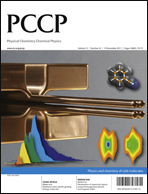Universal ultracold collision rates for polar molecules of two alkali-metal atoms
Abstract
Universal collision rate constants are calculated for ultracold collisions of two like bosonic or fermionic heteronuclear alkali-metal dimers involving the species Li, Na, K, Rb, or Cs. Universal collisions are those for which the short range probability of a reactive or quenching collision is unity such that a collision removes a pair of molecules from the sample. In this case, the collision rates are determined by universal quantum dynamics at very long range compared to the chemical bond length. We calculate the universal rate constants for reaction of the reactive dimers in their ground vibrational state v = 0 and for vibrational quenching of non-reactive dimers with v ≥ 1. Using the known dipole moments and estimated van der Waals coefficients of each species, we calculate electric field dependent loss rate constants for collisions of molecules tightly confined to quasi-two-dimensional geometry by a one-dimensional optical lattice. A simple scaling relation of the quasi-two-dimensional loss rate constants with dipole strength, trap frequency and collision energy is given for like

- This article is part of the themed collection: Physics and chemistry of cold molecules

 Please wait while we load your content...
Please wait while we load your content...